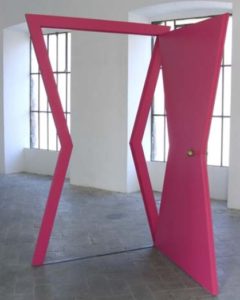Where do we stand with the Sustainable Development Goals?
On 17th and 18th December the general meeting of the Ambassadors of the Third Paradise was held in Cittadellarte in Biella, together with Michelangelo Pistoletto, who presented his latest book “The Formula of Creation”, written in the course of the past twenty-two years to share with all of us his life, art and philosophy from the very beginning up to today*.
On this occasion, I was given the opportunity to present the global initiative Inner Development Goals*.
“The starting point for this initiative is the belief that there is a missing piece in our efforts to create a sustainable global society. We have accumulated much knowledge about environmental challenges, climate change, poverty, public health, and various social illnesses.
We have a vision of what needs to happen, we have acquired knowledge around conditions and causes, and various ideas have transformed into actions as regards the UN Agenda 2030 with its 17 critically important areas relating to sustainability, however, progress has so far been disappointing”.
Why?
We may be all focusing excessively on creating a legal and regulatory framework for implementing the UN 2030 Agenda so precise and detailed that we now have an overruled system of policies and procedures, hindering rather than facilitating the achievement of the 17 Sustainable Development Goals (“SDGs”).
The implementation of the UN 2030 Agenda may be improved by putting in place cognitive and behavioural processes directed to influence the nature, intensity, duration and expression of our emotions, be them negative or positive, including a series of strategies to be able to identify, control and govern them.
A process that can also be called a “restructuring” or “re-evaluation” of our emotions.
How can Inner Development Goals facilitate and contribute to this process?
What is Inner Development Goals?
Inner Development Goals is a non-profit, open-source organization for inner development, researching, collecting, and communicating of science-based skills and qualities that can help us live purposeful, sustainable, and productive lives. Together with more than 4000 scientists, experts and practitioners, Inner Development Goals has developed a framework of the capabilities, qualities and skills that are needed to achieve the SDGs.
“Progress is not happening fast enough. Right now, it doesn’t look like we will reach the goals in time. There is an urgent need to increase our collective abilities to face and work with complex challenges effectively. This is why we are co-creating the Inner Development Goals*”.
The Inner Development Goals initiative has been recommended as an important framework to achieve the SDGs in the European Parliament resolution of 23rd June 2022 on the implementation and delivery of the SDGs.
Section 50 of the resolution “underlines the importance of SDG 17 (about partnerships for the goals); it acknowledges, in the framework of global partnerships and capacity building, the innovative role of open-source initiatives such as Inner Development Goals, which aims at educating, inspiring and empowering people to be a positive force for change in society, thereby accelerating the progress towards achieving the SDGs”.
The Inner Development Goals framework indicates five categories and twenty-three skills and qualities which are especially crucial in accelerating the achievement of the Sustainable Development Goals. The five categories (being, thinking, relating, collaborating and acting) and the related skills and capacities (listed in the table below) are fundamental tools to put in place a practical action plan on how to achieve the UN 2030 Agenda.
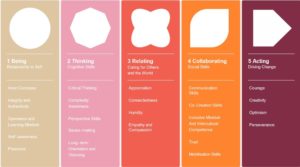
The Inner Development Goals’ prioritised objectives are: Uniting decision makers within business, academia and civil society around the fact that human capabilities and skills are a prerequisite for sustainable and inclusive societies; Making internal development available for all individuals, through language, art and humour, regardless of their background; Contributing to helping the planet reach the Sustainable Development Goals set by the United Nations.
I shall focus on language, art and humour, stressing “regardless of their background”, to demonstrate how these three pillars may improve our personal and profession life, aiming at a more sustainable and common-purpose oriented implementation of the SDGs.
Why art?
In the last few years, many people have asked me the reason why I dedicate most of my spare time to contemporary art.
Sometimes I reply that it’s because I like to go around always dressed in black, sometimes that it’sbecause I love to attend cocktails, other times that it’s because it is somehow trendy.
To give a serious reply to this question, I always refer to “The Philosophy of Andy Warhol – From A to B and Back Again”, which has a chapter entirely dedicated to “work”. I shall therefore quote Andy:
“Being good in business is the most fascinating kind of art. Making money is art, working is art and good business is the best art.”
This concept has remarkably influenced me in my daily activities, especially in those moments when you wonder if you are doing the right thing, in both your personal and professional life: being able to realise that your work may be considered as “the most fascinating kind of art”, not to say “the best art”, constitutes the best motivation ever.

A further consequence of Andy’s philosophy was to provoke my intellectual curiosity into looking for other artists capable of giving me a similar message and once again Andy indicated me a way in saying “I don’t understand anything except green bills”. So I started to collect dollar bills reinterpreted by him and other great artists who followed him in working on money, from Keith Haring to Joseph Beuys, from JSG Boggs to Michelangelo Pistoletto, as well as other contemporary artists to whom I gave a one dollar bill to be turned into an artwork. A real example of “detournement” in the situationists’ philosophy, which I documented in various catalogues and exhibitions in museums and art galleries around the world. The next destination of my collection is the metaverse.

I put in place an art “divertissement” called “Circulart Economy”: money becoming art becoming money in a never-ending circular phenomenon.
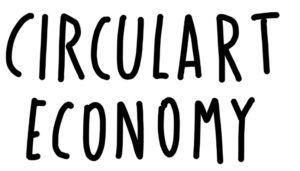
This is the playful part of my involvement in contemporary art; while having fun, I understood that art may have other fundamental influences in our personal and professional daily activities, in my case as in–house counsel of multinational companies.
The power to change the world
In June 2022, the World Health Organization published a report on the role of art in improving human health and well-being*, with a bibliography of almost one thousand scientific publications supporting this theory.
Beforehand, art had already been recognised as having “the power to change the world”: in his report at the World Economic Forum of 18 June 2016, the Danish/Icelandic artist Olafur Eliasson argued that dedicating oneself to art involves a better connection to one’s senses, body and mind*.
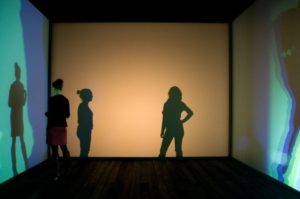
Olafur opens his paper as follows: “Engaging with art is not simply a solitary event. The arts and culture represent one of the few areas in our society where people can come together to share an experience even if they see the world in radically different ways. The important thing is not that we agree about the experience that we share, but that we consider it worthwhile sharing an experience at all. In art and other forms of cultural expression, disagreement is accepted and embraced as an essential ingredient”.
It is worth noticing that in his writings Olafur Eliasson often refers to the Icelandic Parliament Althing, established in 930 in the plain of Thingvellir and subsequently transferred to Reykjavik maintaining the same name Althing, i.e. “the space for all things”, where rights of property on lands up to fundamental laws governing Icelandic society were discussed*.
Dialogue is indeed the best way to improve any kind of relationship, giving each individual the opportunity to explain their respective positions: another example of “detournement” (referred toabove, talking about my banknote collection), to be intended as a change of perspective of a determined situation.
In the last few years, I have taken part in the global artwork of the Third Paradise by Michelangelo Pistoletto, aiming at raising awareness on the necessity to work together to save our planet, in line with the Sustainable Development Goals.
The SDGs were publicly presented (probably for the very first time) by Cittadellarte in Cuba on 24 November 2014, during the first Forum of the Art of Demopraxy, where the term “praxis” (i.e. “doing”) replaces the term “kratos” (i.e. “power”). In 2014, in parallel, the United Nations selected the Third Paradise as the symbol of (i) their 75th anniversary and (ii) the global challenge to be faced by all countries, necessarily united.
As an Ambassador of the Third Paradise, I promote on a daily basis the interaction of art with all possible fields of our society with the view of “doing”, mainly to implement the UN Agenda 2030, atthe same inspired by the co–creative process of the Inner Development Goals.
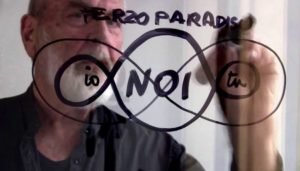
The basis of our global project is well represented in the picture above, which shows the formula of trinamics, promoting dialogue and cooperation among all of us (“noi”).
At the 1968 Venice Biennale, Michelangelo invited people to collaborate with him, for collaboration meaning “a non–competitive human relationship, a deep and perceptive understanding of each other. Releasing a part of myself to anyone who wishes to release a part of themselves is the artwork I am interested in”.

In his “The Formula of Creation”, published in these days, Michelangelo confirms that “demopratic art does not subvert but regenerates, harmonises and interconnects any form of existing government”*.
Dialogue, art and humour remain the three pillars of my inner development, as in–house counsel as well as a passionate of contemporary art, hoping that said pillars are somehow reflected in my suggestions on how to possibly improve the implementation of the UN 2030 Agenda.
A final invitation: enter into art through Michelangelo’s “Door – Art Sign”, contextually following the Inner Development Goals in order to demopractically implement the Sustainable Development Goals, thus participating in the global project of the Third Paradise.
